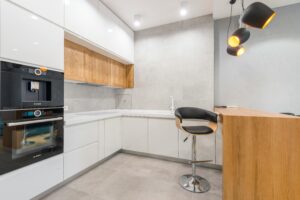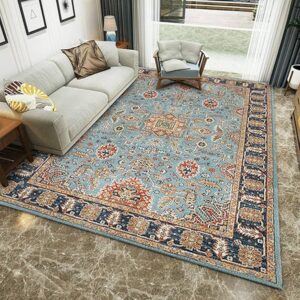Wood parquet flooring is a timeless and elegant flooring solution that has been used for centuries in residential and commercial interiors. Known for its intricate geometric patterns and the natural beauty of real wood, parquet floors continue to be a preferred option for many homeowners and designers. In this Wood Parquet Flooring Review: Pros And Cons, we’ll delve into the advantages and disadvantages of parquet flooring, helping you determine if it’s the right choice for your space.

What is Wood Parquet Flooring?
Wood parquet flooring is made up of small pieces of hardwood arranged in decorative, mosaic-like patterns. Unlike traditional planks, parquet uses individual wood blocks, typically in shapes like herringbone, chevron, basket weave, or brick. These pieces are often pre-finished and mounted on mesh or panels for easier installation.
The Wood Parquet Flooring Review: Pros And Cons cannot begin without acknowledging the craftsmanship and aesthetic value that parquet brings. Whether it’s a vintage European home or a modern loft, parquet flooring can complement a wide range of interiors.
Pros of Wood Parquet Flooring
1. Aesthetic Appeal
Parquet flooring is visually stunning. The ability to create intricate and artistic patterns gives it a design edge over standard wood planks. A well-laid parquet floor becomes a focal point in any room, adding elegance and character.
2. Timeless Style
When it comes to timeless flooring solutions, parquet is hard to beat. Many historic buildings still have original parquet floors that have aged beautifully. This durability and classic appeal are why it’s often featured in luxury real estate listings.
3. Variety of Wood Species
Another major plus in this Wood Parquet Flooring Review: Pros And Cons is the range of available wood types. From oak and walnut to mahogany and maple, parquet can be tailored to suit various color schemes and design styles.
4. Durability
When properly installed and maintained, wood parquet flooring can last for decades. The solid wood construction means it can be sanded and refinished multiple times, extending its life even further.
5. Eco-Friendly Options
Many parquet flooring options today are made from sustainably sourced wood. In addition, manufacturers now offer engineered parquet that uses less hardwood and more sustainable materials without compromising strength or appearance.
Cons of Wood Parquet Flooring
1. Installation Complexity
Parquet installation requires more skill than traditional plank flooring. Precision is crucial to align the pattern correctly, and mistakes can be costly. In this Wood Parquet Flooring Review: Pros And Cons, we must emphasize that professional installation is often necessary—adding to the overall cost.
2. Moisture Sensitivity
Parquet flooring, especially the solid wood type, is sensitive to moisture and humidity. Warping and swelling may occur in high-moisture areas like bathrooms or basements. Engineered parquet is more stable but still needs caution.
3. Maintenance Requirements
Although parquet can be durable, it requires consistent care. Dust and debris can accumulate between the small pieces of wood, and scratches may be more noticeable due to the intricate patterns. Periodic refinishing is necessary to maintain its beauty.
4. Cost
In our Wood Parquet Flooring Review: Pros And Cons, one of the cons is definitely cost. Parquet tends to be more expensive than standard wood planks. The cost of materials, the intricacy of installation, and the maintenance involved all contribute to the higher price point.
5. Compatibility with Modern Systems
Parquet flooring can be less compatible with underfloor heating systems compared to engineered wood or vinyl. This limits its use in modern energy-efficient home designs unless specifically engineered to suit such systems.
Engineered vs. Solid Parquet Flooring
One major factor to consider in any Wood Parquet Flooring Review: Pros And Cons is the type of parquet flooring—solid or engineered.
- Solid Parquet is made entirely from hardwood and is extremely durable. However, it is more prone to moisture damage and tends to be more expensive.
- Engineered Parquet consists of a thin hardwood layer on top of a high-density core. It’s more dimensionally stable and better suited to areas with fluctuating humidity.
Each option has its own pros and cons, and the decision largely depends on your budget, climate, and intended use.
Take a moment to explore this products →
Where is Parquet Flooring Best Used?
Parquet flooring is best used in living rooms, dining rooms, bedrooms, and hallways—areas where style and comfort are essential, but moisture is minimal. While it adds luxury to these spaces, it’s generally not recommended for bathrooms, laundry rooms, or kitchens unless a moisture-resistant version is selected.
Design Versatility
Another point in favor of parquet in this Wood Parquet Flooring Review: Pros And Cons is design versatility. It works in traditional settings, such as colonial or Victorian-style homes, as well as in ultra-modern interiors. It pairs well with minimalist furniture, rustic décor, and even bold, eclectic styles.
With customizable patterns and a wide range of stains and finishes, parquet lets homeowners express unique aesthetics that standard plank flooring might not allow.
How to Maintain Wood Parquet Flooring
Proper care is essential to extend the life and appearance of parquet floors. Here are a few maintenance tips:
- Sweep or vacuum regularly to remove dirt and grit.
- Use damp (not wet) mops for cleaning.
- Refinish the surface every few years depending on wear.
- Use furniture pads to prevent scratches.
- Avoid excessive water or harsh chemicals.
Consistent maintenance enhances the benefits outlined in this Wood Parquet Flooring Review: Pros And Cons and ensures the flooring continues to add beauty and value to your home.
Read also:
- Outdoor Flooring Dubai: Enhance Your Outdoor Spaces
- Vinyl Flooring Dubai For Home Interior
- The Elegance of Luxury Wall to Wall Carpet
Conclusion: Is Parquet Flooring Right for You?
In wrapping up this Wood Parquet Flooring Review: Pros And Cons, it’s clear that wood parquet flooring is a premium choice offering timeless style, design flexibility, and long-term durability. However, it comes with certain challenges, including installation complexity, maintenance, and cost.
If you’re looking for a flooring option that makes a bold, artistic statement while offering solid performance and a classic feel, parquet may be an ideal choice. On the other hand, if ease of installation, moisture resistance, or a lower price point are your priorities, other flooring options like vinyl planks or engineered hardwood may suit you better.









